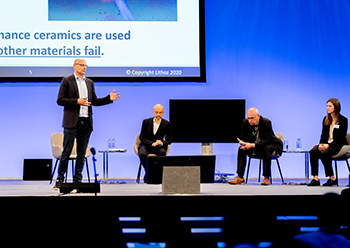

More than 750 decision-makers and experts from the entire additive manufacturing (AM) value chain will come together at the AM Forum 2023 in Berlin in July.
The 7th AM Forum Berlin, on July 4 and 5, brings together AM decision-makers and experts around exciting user stories and use-cases for industrial AM applications.
The forum will be held as an in-person event only to ensure maximum networking and discussion and participants on site will exchange thoughts with 90 exhibitors and 80 speakers.
Additive manufacturing (AM) can become a game changer in the current volatile, uncertain, complex and ambiguous world. Additive technologies offer new solutions for companies to address their challenges and enable important competitive advantages. The conference will highlight the advantages of AM by providing exciting use cases and success stories from various industries, said organisers.
The five key advantages AM offers include:
* Improving product properties: Traditional manufacturing methods have imposed many restrictions on product design that no longer apply to additive manufacturing. Almost unlimited complex geometries can be manufactured. AM provides developers and designers with a maximum of design freedom and thus allows a high degree of function optimization and integration. In this way, AM enables significant improvements in product and component properties up to the development of completely new innovative products.
* Mass customization: Additive technologies can be used to economically produce individualised products for batch size 1 as well as for larger batch sizes (mass customization). When shapes, functions and material requirements have to be individually tailored to the user, traditional processes reach their limits. They are also time-consuming and cost-intensive, which runs counter to the desire for rapid availability. AM removes these limitations. With the right digital tools in place, the customization desired by the user can be implemented immediately in a 3D file and get produced. Since the production process costs are the same for both 1 and 1,000 printed objects, customised products can be produced additively in small and large quantities without impacting costs. Users can choose from a variety of materials. The manufacturing process itself is fast, as no retooling is required.
* Supply chain resilience: Traditional supply chains can be shortened and simplified with the help of additive manufacturing. The adoption of AM can help companies right away to make supply chains more resilient by increasing responsiveness to market demand, shortening lead times and enabling on-demand production. On-demand production of spare parts and components, as well as decentralized production strategies, can drastically reduce delivery times and make supply chains flexible. Digital warehousing and platforms - enabled by AM - are already revolutionizing supply chains.
* Responsible production: Companies can reduce their ecological footprint by using AM. Higher sustainability and efficiency in production can be realized through using less material and energy in production. "Best part is no part". In addition, local production reduces transport distances and thus CO2 emissions. OEMs in particular are paying increasing attention to the CO2 balance of components.
* Considering the entire product lifecycle (lifecycle leverage), weight reductions realized through additive design, for example, can reduce energy consumption over the entire period of use of the product.
* Cutting production costs: By using AM, companies can realise significant cost-saving potentials in various ways. For example, manufacturing costs can be lower than traditional manufacturing due to reduced material consumption compared to subtractive technologies (such as CNC machining).
Other advantages
Shorter time to market: Although printing a part can take a few hours, it is still a faster method of production when the production process is considered as a whole. The duration of the product creation process can be reduced from a few months or weeks to a few days.
Elimination of tooling and mould making: By using 3D printers, prototypes and components can be printed directly. Expensive, traditional tooling is often unnecessary. If tools are needed, they can be produced cheaply and customised with AM.
Simplification of assembly: Functional or complex components can be created in one step, thus avoiding chronological assembly steps. The manufacturing process is accelerated and costs are saved. In addition, additive design significantly reduces the number of components.
Furthermore, inventory costs can be reduced by setting up digital on-demand production on site.
At the forum, leading AM users will share best practices for cutting costs by using additive technologies.

